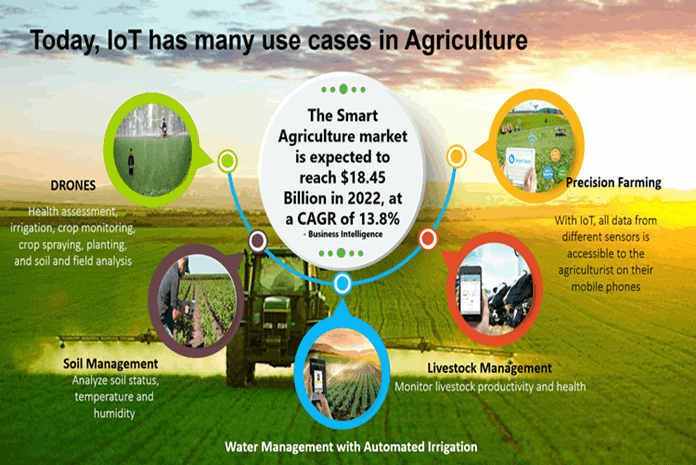Introduction
Agriculture has come a long way since the days of manual labor and traditional farming practices. Today, modern technology is transforming the agricultural sector, making it more efficient, sustainable, and productive. One of the key advancements in this regard is precision nutrient management with automation.
In this blog post, we will delve into the world of automation in agriculture, focusing on how it contributes to environmental sustainability. We’ll explore the benefits, challenges, and future prospects of this transformative approach to farming.
The Need for Precision Nutrient Management
Before diving into the details of automation in agriculture, it’s essential to understand why precision nutrient management is crucial. Traditional farming practices often involve the uniform application of fertilizers, pesticides, and water across entire fields. While this approach has served us for decades, it has significant drawbacks.
Uniform application leads to several issues, including:
Waste: Applying excess nutrients or chemicals can lead to environmental pollution and economic losses.
Inefficiency: Not all parts of a field require the same amount of nutrients or irrigation. Uniform application is inefficient and may result in suboptimal crop growth.
Environmental Impact: Overuse of fertilizers and chemicals can harm soil health, water quality, and biodiversity.
Costs: Traditional farming practices can be expensive due to the high input costs associated with fertilizers and pesticides.
To address these challenges, precision nutrient management is essential. This approach involves customizing nutrient and resource application based on the specific needs of different parts of a field. This level of precision is nearly impossible to achieve with manual labor alone, making automation a critical component of modern agriculture.
Automation in Agriculture
Automation in agriculture involves the use of various technologies and systems to streamline farming processes. These technologies include:
Sensor Technology: Soil sensors, weather stations, and drones equipped with cameras and sensors provide real-time data on soil conditions, weather patterns, and crop health.
Machine Learning and AI: Advanced algorithms analyze data collected from sensors to make precise recommendations for nutrient application, irrigation, and pest control.
Robotic Farm Equipment: Autonomous tractors, planters, and harvesters can perform tasks with unmatched precision, reducing labor costs and improving efficiency.
IoT (Internet of Things): IoT devices connect farm equipment and systems, allowing for remote monitoring and control.
Data Analytics: Comprehensive data analysis helps farmers make informed decisions about crop management and resource allocation.
Benefits of Automation in Agriculture
The integration of automation into agriculture offers a wide range of benefits, including:
Resource Efficiency: Automation ensures that resources like water, fertilizers, and pesticides are used optimally, reducing waste and cost.
Higher Yields: Precise nutrient and resource management can lead to increased crop yields, ensuring food security and profitability for farmers.
Environmental Sustainability: Reduced chemical runoff and improved soil health contribute to a more sustainable agricultural system.
Labor Savings: Automation reduces the need for manual labor, allowing farmers to focus on higher-level tasks and reducing labor costs.
Data-Driven Decision-Making: Real-time data analysis enables farmers to make informed decisions, leading to better crop management.
Risk Mitigation: Automation can help farmers respond quickly to changing environmental conditions, such as droughts or pests.
Challenges and Considerations
While automation in agriculture holds great promise, it also presents some challenges and considerations:
Initial Investment: Implementing automation systems can be expensive, which may be a barrier for small-scale farmers.
Data Privacy and Security: Collecting and storing sensitive farm data requires robust cybersecurity measures.
Training: Farmers need training to effectively use automation technologies and interpret data.
Compatibility: Integrating various automation components can be complex, requiring careful planning.
Regulatory Compliance: Farmers must adhere to regulations related to data privacy, environmental impact, and safety.
The Future of Automation in Agriculture
The future of agriculture lies in automation. As technology continues to advance, we can expect even more sophisticated and accessible automation solutions. Here are some trends to watch for:
Artificial Intelligence: AI will play an increasingly significant role in data analysis and decision-making on farms.
Autonomous Vehicles: Fully autonomous farm vehicles, including drones and robots, will become more commonplace.
Blockchain Technology: Blockchain can be used to enhance transparency and traceability in the agricultural supply chain.
Digital Twins: Digital twin technology will allow farmers to create virtual models of their fields for testing different management strategies.
Sustainable Practices: Automation will further enable sustainable farming practices, reducing the environmental impact of agriculture.
Conclusion
Automation in agriculture, particularly in precision nutrient management, is revolutionizing the way we produce food. It promises higher yields, reduced environmental impact, and increased sustainability. While there are challenges to overcome, the benefits far outweigh the drawbacks. As technology continues to advance, the future of farming looks promising, and we can look forward to a more efficient and sustainable agricultural sector.




